




In our upcoming digital magazine, we’re diving into more essential topics in the world of water. The focus of this magazine is going to be innovative solutions in reuse, recycling, and desalination to quality and treatment, we’re bringing you the latest on securing water for the future.

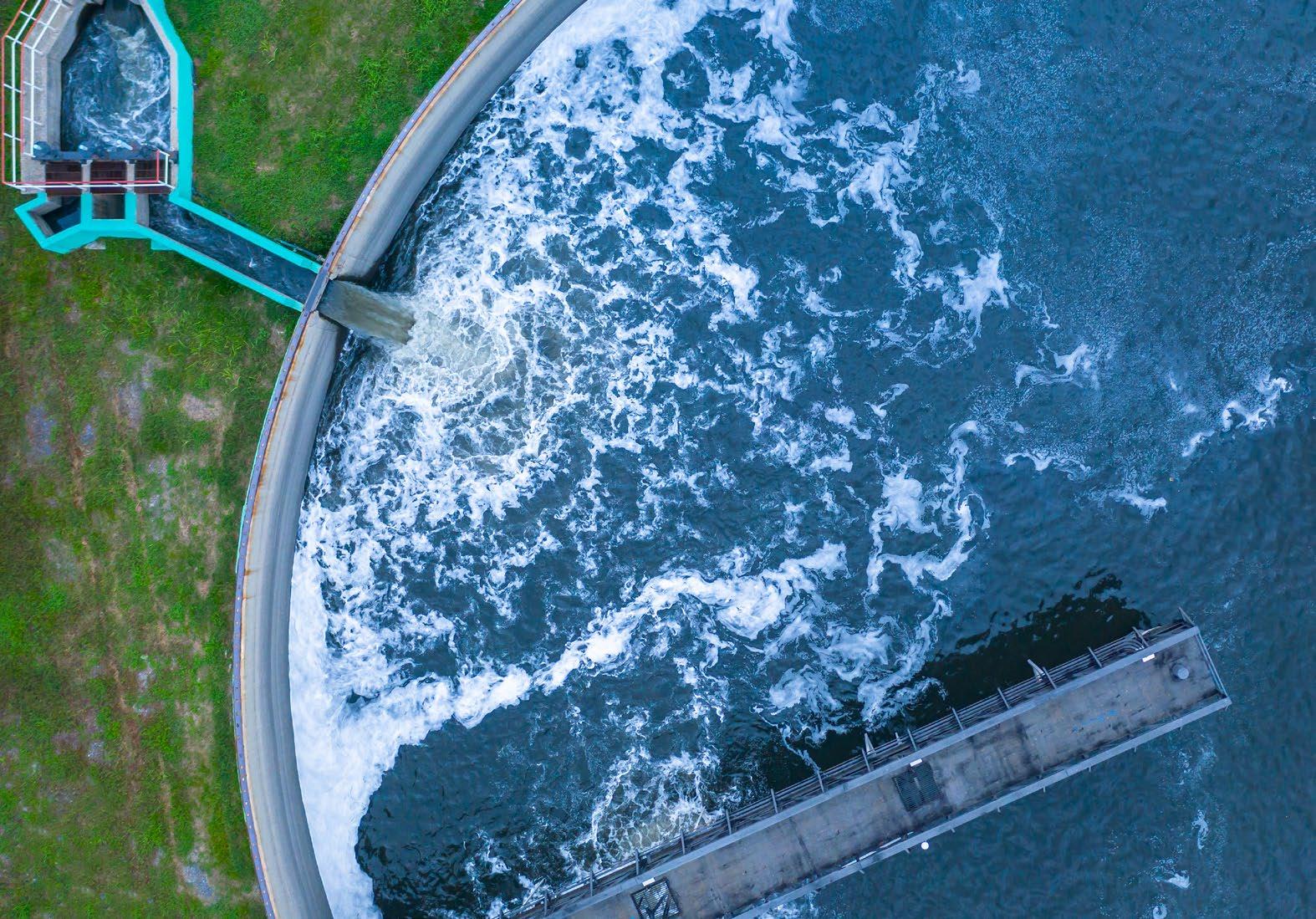


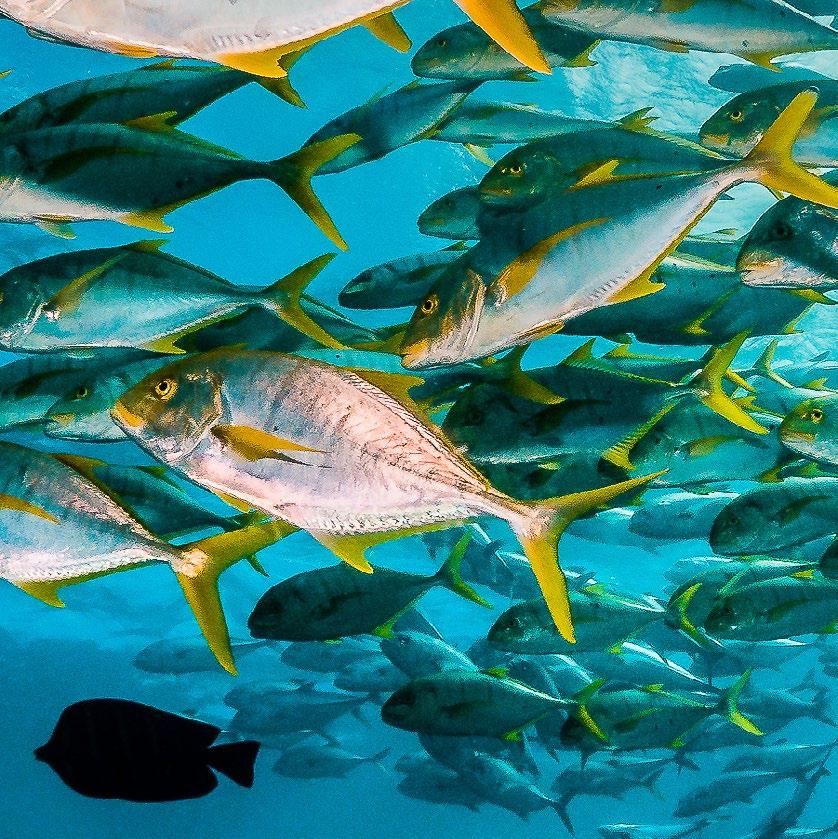
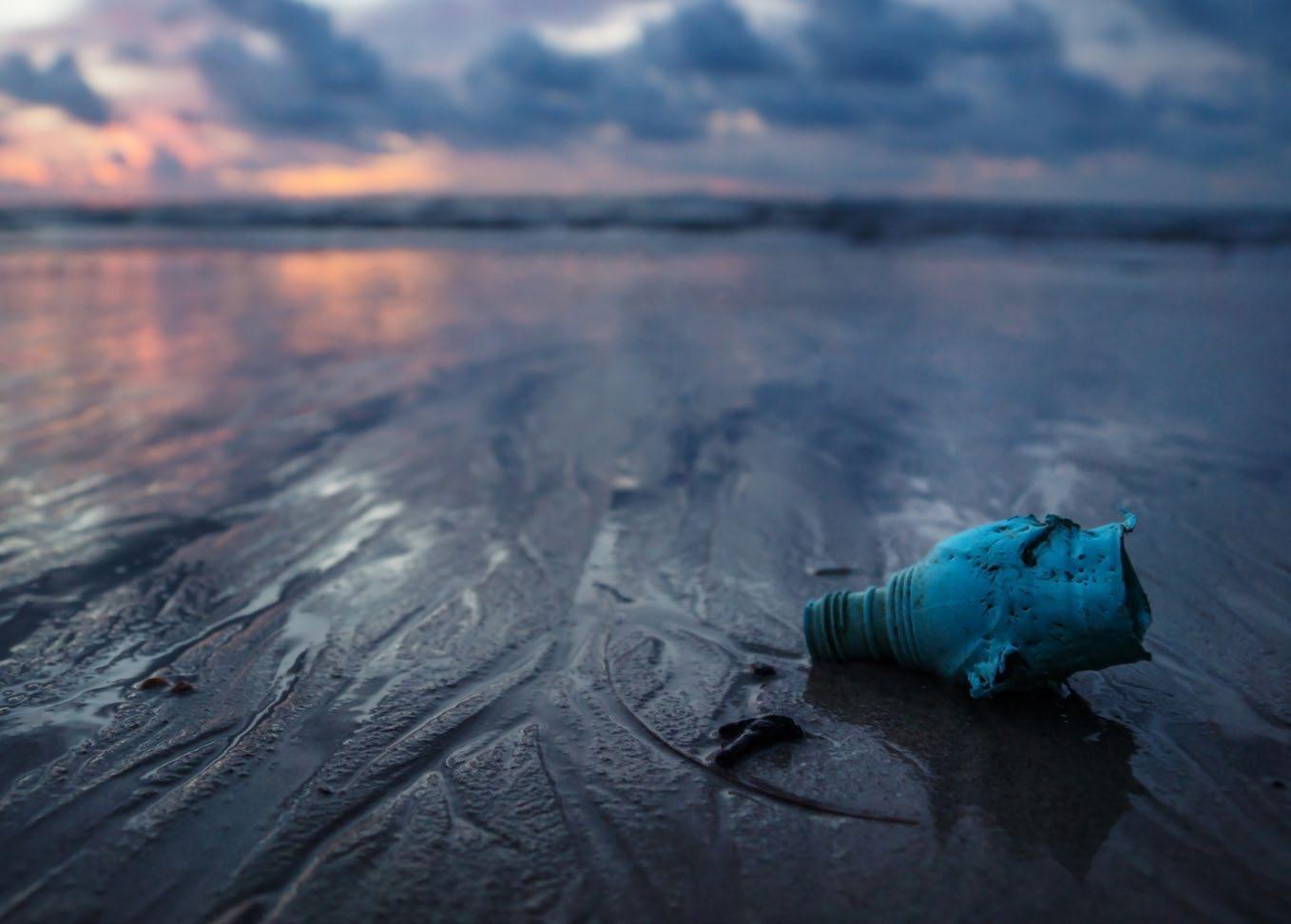

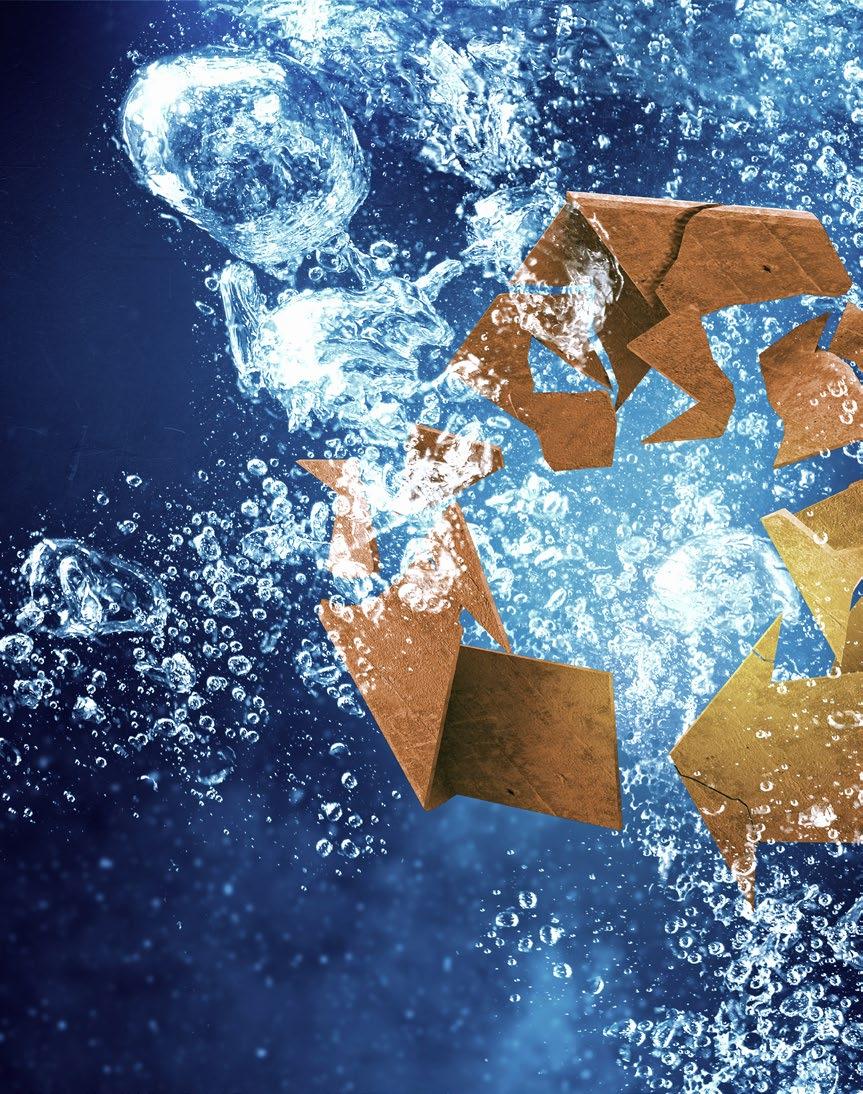

Welcome to H2O Global News’ first-ever supplement and magazine focused on Oceans. To celebrate World Ocean Month, we are proud to launch this on World Ocean Day (8th June 2023).
This year’s theme for World Ocean Day is; One Ocean, One Climate, One Future - Together. We are delighted to share the opinions of experts around the globe in this edition of H2O.


Leading this discussion in this supplement is legendary oceanographer Dr. Sylvia Earle who inspires the public globally and campaigns to save the oceans from threats such as overfishing and toxic waste.
Dr. Sylvia Earle has been named as one of Time Magazine’s “Heroes for the Planet” and the unforgettable Netflix documentary, Mission Blue where she famously says “No ocean, no life. No ocean, no us.”
We are honoured to have Dr. Sylvia Earle on our cover as well as announcing the New Hope Spot In the Antarctic in H2O Global News (pg 4-5).
The rest of the publication focuses on hard-hitting topics, including plastics in our oceans, coastline protection and ocean life threatened by the ever-changing climate.


We would like to take the time to also thank our newly appointed editors, Darby Bonner and Martyn Shuttleworth for their passion and diligence on this topic. It is very fitting that this is both their first magazine with H2O as they are both Marine Biologists that have now focused their career on journalism.
As founders, both Louise and I would like to thank you, the readers, for your support of H2O Global News and hope that you enjoy this publication.
Abby Davey Publisher and Co-Founder
Partners
Future Water Association Responsible Flushing Alliance


Global Water Works
SWAN

Water Mission
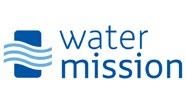
Publisher and Co-Founder
Abby Davey abby@h2oglobalnews.com
Creative Director and Co-Founder
Louise Davey louise@h2oglobalnews.com
Editorial Team
Darby Bonner darby@h2oglobalnews.com
Martyn Shuttleworth martyn@h2oglobalnews.com
Advertising +44 (0)7817 105 258 marketing@h2oglobalnews.com
FOLLOW H2O ON @h2oglobalnews

H2O Global News delivers news from around the world covering the Drinking/Potable Water, Hydropower and Wastewater industries incorporating technology, companies, legislation, the environment and case studies. The H2O Global News Magazine is published four times a year (Spring, Summer, Autumn and Winter) by Blue Manta Media Limited, Buckinghamshire, England, UK.
H2O Global News t/a Blue Manta Media Limited has used utmost care to ensure and maintain the accuracy, completeness and currency of information published on this site. We, however, take no responsibility for any errors or omission, though if notified of any we will endeavour to rectify such.

THE IVAPPS BODY KNOWN AS THE PORTAL , ACCOMMODATES BOTH THE SMART CARTRIDGES AND VALVE CARTRIDGE OFFERING A UNIQUE SUSTAINABLE SOLUTION TO FLUID SYSTEM MONITORING, SUCH AS POWER OPTIMISATION, PRESSURE MODULATION AND LEAK DETECTION.





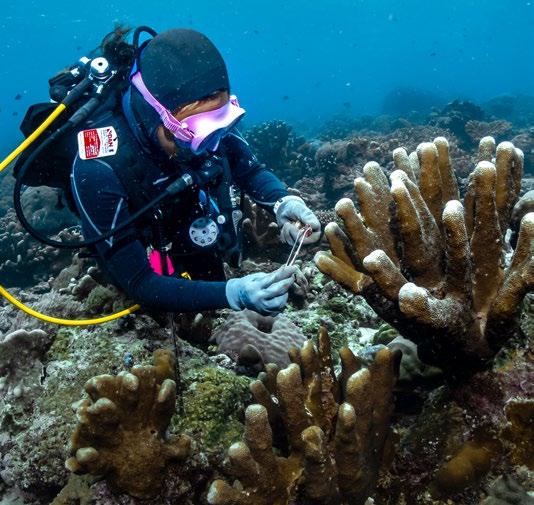






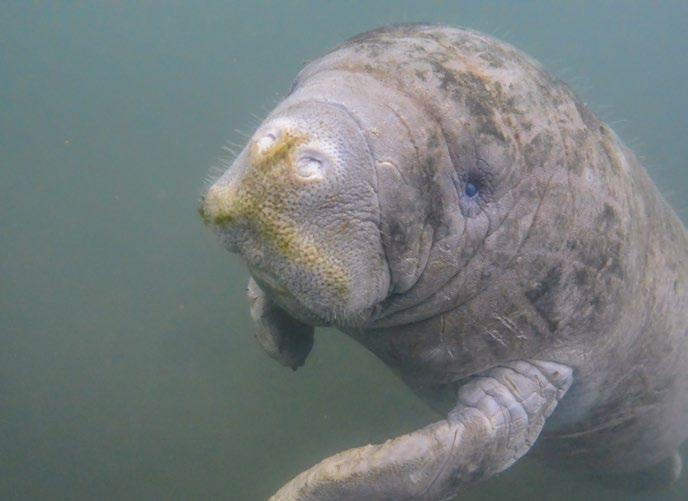
 Written By | DARBY BONNER
Written By | DARBY BONNER
Mission Blue (Sylvia Earle Alliance), led by legendary oceanographer Dr. Sylvia Earle, is uniting a global coalition to inspire an upwelling of public awareness, access and support for a worldwide network of marine protected areas (MPAs) – known as Hope Spots. Currently, the Mission Blue/Sylvia Earle Alliance includes more than 200 respected ocean conservation groups and like-minded organisations, from large multinational companies to individual scientific teams doing critical research. Mission Blue also supports the work of conservation NGOs that share the mission of building public support for ocean protection. Mission Blue are making Hope Spots a reality and are hoping to form a global network of MPAs large enough to restore the ocean, the heart of our blue planet.

A Hope Spot is any special place that is critical to the health of the ocean. Hope Spots are about empowering and supporting individuals and communities around the world in their efforts to protect the ocean.
Hope Spots are unique areas which provide hope for the well-being of our blue planet. This could be due to the high diversity of species found there, their role as major migratory or spawning grounds, the presence of particularly rare, threatened or endemic species, as well as those with significant historical, cultural or spiritual value. Mission Blue’s goal is to unite efforts to protect the ocean through a network of globally connected Hope Spots by raising public awareness and promoting access and support for their conservation and protection.

The East Antarctic Hope Spot, which was designated at the start of the year is an ice sheet on the eastern tip of the continent that flows into the Southern Ocean. The ecologically rich area hosts a variety of wildlife, including penguins, whales, seals, krill and nearly half of the world’s Ross seal population. The remote area remains largely untouched by human intervention, however, increased human activities and associated infrastructure could have long-lasting effects on the environment.
The Antarctic and Southern Ocean Coalition (ASOC) is developing international campaigns to designate an East Antarctic marine protected area (MPA). The proposed MPA will be designed to achieve a variety of conservation objectives, such as protecting foraging areas and conserving biodiversity. The designation of the area as a Mission Blue Hope Spot, will help raise the profile of this important ecosystem and assist with garnering public and government support for its protection.
Hope Spots are built on a number of key principles, the first of which involves identifying the area that will be protected. Once this has been decided, the threats and issues facing the area need to be identified, and actions to tackle these need to be prioritised and agreed upon.
“Hope Spots have an advantage, as they are proposed by the community for the community to improve ocean protection,” Sylvia Earle says. “Often, the idea to protect an area comes first from the central government, and then the challenge is to get the local community engaged. By definition, Hope Spots are already working from the community angle from their instigation.”
The vital next step is stakeholder engagement, be that with members of the local community or at a government and policy level. Making progress to conserve and protect a Hope Spot will be extremely challenging without the involvement and buy-in of all the relevant stakeholders. Another important piece of the puzzle to ensure the long-term success of a Hope Spot is the accessibility to funding streams that can be utilised to support conservation and monitoring activities as well as management actions.
Individuals, NGOs or Institutions who feel that the area they are actively working in meets the Hope Spot criteria and have the support of the local community are welcome to submit a nomination. Nominations can be submitted via the Mission Blue website, where specific information such as current threats, ecological significance, details on the goals and actions planned for the Hope Spot and information on community/ government support can be submitted. The nomination will then be taken through a review process which may ultimately lead to its designation as a Mission Blue Hope Spot.
Mission Blue’s dream is to lead the way in creating a global network of Hope Spots that will protect and restore a healthy ocean and our blue planet.

Mission Blue aims to support and guide community members, conservationists, researchers and teachers on their journey to help the ocean. Collectively Hope Spots create a global wave of community support for ocean conservation that leaders and policy makers cannot ignore.
Website: https://missionblue.org
“The marine scientific community agrees that we need to secure 30 percent protection by 2030 in order to maintain a planetary system that sustains life on Earth.” - Sylvia Earle
 Written By | DARBY BONNER
Written By | DARBY BONNER
Plastic pollution is one of the biggest environmental challenges the world is facing today. The oceans, in particular, are bearing the brunt of this crisis. Plastic waste that ends up in the oceans, either through direct dumping or through rivers and other waterways, poses a serious threat to marine life, ecosystems, and even human health. The scale of plastic pollution in the oceans is staggering, with an estimated 8 million metric tons of plastic entering the seas every year. While numerous efforts have
taken place over the last few decades over the globe, plastic is still taking over, and by 2050 there could be more plastic than fish in the sea (by weight).

Global waste trading is an international transaction between two or more countries for the disposal and recycling of waste, such as plastics. Waste is unavoidable due to the industrialisation of economies worldwide, and still, to this day, our daily lives are full
of consumable products and single-use plastic packaging. To try and manage global waste, in the 1970s, countries introduced waste trading.
Typically it is cheaper for developed countries to ship containers packed of plastic halfway around the globe to be “recycled” in developing countries than to deal with the plastic waste themselves. And while it can be a lucrative “green” industry in the developing world, many countries find it a more profitable business if they burn it or dump it on their ‘growing mountain’ of a landfill.
So, who’s at fault? Can we blame these ‘rogue’ importers? What about the local governments who allow this to slide past them with a blind eye? Or do we point the finger at the exporters who pay for their plastic waste to go out of sight and out of mind? The irony is that wherever the waste is sent, whether it be 10km or 10,000km, it will still end up on Earth somewhere. And while the immediate effects of plastic waste are most felt locally, in the long run, it is the entire global ecosystem that suffers. The good news is many organisations are working effortlessly to save our blue planet, including The Ocean Cleanup and Sungai Watch.
Founded in 2013 by Boyan Slat, The Ocean Cleanup is a non-profit foundation headquartered in Rotterdam, the Netherlands. The Ocean Cleanup team is taking a two-pronged approach: stemming the inflow via rivers and cleaning up what has already accumulated in the ocean. Their biggest mission to date is tackling the Great Pacific Garbage Patch. The Great Pacific Garbage Patch (GPGP) is the largest of the five offshore plastic accumulation zones in the world’s oceans, located halfway between Hawaii and California. The GPGP covers an estimated surface area of 1.6 million square kilometres, three times the size of France. The plastics that accumulate in this area are
toxic for sea surface feeders and increase the chances of entanglement. Plastics also massively affect public health and the economy.
The Ocean Cleanup’s System 002, also known as “Jenny”, has been successfully deployed into the ocean to harvest plastic from the GPGP. Out of the nine test extractions, The Ocean Cleanup collected a total of 28,659 kilograms (63,182 pounds) of plastic from the ocean, of which 9,014 kilograms were

removed in a single haul! The plastic harvested from the GPGP will be tracked and traced, and verified through the certification body DNV using its identitypreserved chain of custody model.
In combination with System 002, The Ocean Cleanup hopes to deploy System 03 in 2023 after a generous donation of $25 million from Joe Gebbia, Co-founder of Airbnb. With these funds, The Ocean Cleanup expects to deploy a fleet of 10 systems, which will be capable of reducing 50% of the waste in the GPGP every 5 years. While they carry out this incredible mission, The Ocean Cleanup will continue their ongoing effort to stop plastic from entering the ocean via rivers with their new Interceptor projects, which are planned to begin between 2023 and 2024.
Boyan Slat has said: “Getting here was not always easy,
Continued on page 8

but we remained focused on our mission and its necessity. While it’s just the tip of the iceberg, these kilograms are the most important ones we will ever collect because they are proof that cleanup is possible.”
Learn More: theoceancleanup.com
Currently, Indonesia ranks as the second largest plastic polluter of the oceans after China. Sungai Watch is on a mission to protect and restore Indonesia’s rivers by developing and designing simple technologies to stop the flow of plastic pollution from going into the ocean, starting with the infamous tourist island of Bali.
To date (May 2023), the Sungai Watch team has collected 1,148,611 kg of plastics. This is all down to Sungai Watch’s 180 barriers installed in Indonesia and

the 550 + community cleanups they have organised. Sungai Watch has installed “trash barriers” in Indonesia’s rivers to collect debris before it flows into the ocean. This is the quickest and most cost-effective method to eradicate plastic pollution by activating communities on land in low economic countries like Indonesia.
In addition to their barriers, Sungai Watch organises emergency cleanups at illegal dumps and along riverbanks to prevent plastic from entering rivers. They are also working extremely hard to enforce proper waste management at the local level.

To continue their hard work there are ways that you can support Sungai Watch by sponsoring a barrier, donating to help Sungai Watch fund more river and illegal landfill clean-ups, signing up for their volunteer opportunities, and reporting a dirty river in Indonesia.
Learn more: sungai.watch

The MetriNet telemetry bollard provides street level water quality monitoring for distribution networks.
Our ultra low powered, multi-parameter, MetriNet smart water quality monitor delivers a modular solution for generating reliable and continuous data within distribution networks. With 16 parameters to choose from, the MetriNet telemetry bollard offers a secure and serviceable street level monitoring solution with less hostile environmental conditions, prolonging the life of the monitoring asset. Creating intelligent, optimised, smart water networks of the future with MetriNet. analyticaltechnology.com
Solutions for a Smarter Future

 Written By | MARTYN SHUTTLEWORTH
Written By | MARTYN SHUTTLEWORTH
Iwas born and grew up on the coast of Morecambe Bay, England, overlooking a landscape of endless mudflats where the tides and the seasons shape the rhythms of life. Like many coastlines around the world, this beauty is fragile and often taken for granted, and it seems like coasts only hit the news when oil or sewage spills onto beaches.
When you grow up on the coast, you develop a deep affection and respect for these unique environments, understanding the valuable role they play in protecting both the oceans and the land.
People love coastlines as a place to relax and forget their troubles for a while, enjoying the fresh sea air while fishing, swimming, birdwatching, or simply sampling the delights of a bustling seaside resort. However, visitors don’t always understand the work needed to protect ecosystems and support the precarious, seasonal way of life that is the reality for coastal communities.
Rich coastal environments include unique ecosystems shaped by the sea and the land, constantly changing yet also predictable. They provide havens for fish,
birds, mammals, and other species to thrive and breed. Coastlines are an essential part of the ocean, but they face intense pressure and need protecting.
World Ocean Day is a great time to remember this and look at how we can balance the needs of nature with the needs of coastal communities.
Living where the sea meets the land means learning how to read the tides and the seasons and understanding the underlying patterns of coastal life.

The coastline shapes you as a person, with one foot in the restless ocean and the other on firm soil. No two days are the same, and the deep attachment to the coastline and its communities never truly leaves you.
Many fishing communities rely on coastlines, which are some of the most productive ecosystems on Earth. People want to stay in beachside hotels, go out on motorboats, or party on the beach at night, often driving life to the margins. Waste treatment and agricultural runoff send out pollution and nutrients that encourage algal blooms. Luxury houses spring up, stripping away the saltmarshes that protect the coastline from storm surges and provide a rich environment for life.

On Morecambe Bay, low tide sees wading birds flock to the newly exposed mud to feed and squabble, collecting what they can before the sea returns. Locals walk their dogs along the beach, talking and enjoying the bracing sea breeze. Here, the seasons dictate life, telling the birds when to breed or migrate and setting a timetable for communities. Once the winter seas pass, fishermen can go out, and the coming spring sees shops and hotels get ready for the coming influx of tourists.
Sadly, what makes coastlines attractive is also their weakness because few other habitats experience such conflicts between different groups.
Resolving these conflicts and balancing these contrasting needs is not always easy. How can we protect these fragile ecosystems and stop overfishing while ensuring that people enjoy the beach and fishing communities continue to thrive? How can we stop the overdevelopment of beautiful coastal areas while making sure that tourist money continues to flow into struggling communities often forgotten by governments?
Everyone wants to protect coastal areas, but this involves balancing the needs of every group with nature and creating solutions that give everyone room. That’s why, in this World Ocean Day special, we focus on some of the groups and people trying to find solutions that find a balance and protect nature while also preserving the unique coastal way of life.
Lora Clarke, of Pew Charitable Trusts, discusses how many groups came together for the common goal of protecting salt marshes on the US Atlantic Coast. Caitlin Turner, Policy Officer with Sustainable Inshore Fisheries Trust, talks about the role of Highly Protected Marine Areas and some of the conflicts between groups. Finally, Jon Paul “J.P.” Brooker of the Florida Conservation Trust, talks about manatees, one of the animals most at risk from the conflict between coastlines and human development.
Coasts are often defined by conflicts between different groups, making them some of the most fragile places on the planet. The teeming life and delicate ecosystems jostle with human development as, slowly but surely, the coastline we love disappears beneath hotels and new homes, pollution, and overfishing.
Projects like these give hope and show that it isn’t too late to protect coastal ecosystems and communities. There are solutions, and coastal communities, politicians, and public support increasingly push for coastal protection. We know the destination, but getting there is going to be the difficult part, so events like World Ocean Day are the perfect opportunity to highlight lasting solutions.

The High Seas Alliance (HSA) is a coalition of over 50 organisations, plus the IUCN working to achieve and implement a new biodiversity treaty for the ocean area that is outside national jurisdiction. Otherwise known as the High Seas, this area covers nearly two-thirds of the global ocean – almost half the planet’s entire surface - and they include some of the most ecologically vital yet critically threatened and least protected areas on Earth.
On 4th March 2023, countries meeting at the United Nations reached a significant milestone for the ocean and for efforts to stem global biodiversity decline when they agreed to a new international Treaty, to safeguard marine life in areas that lie beyond national jurisdiction.

In essence - the new Treaty will ensure we can better manage the increasing threats facing the High Seas, ensure they can be adequately protected, and ensure that citizens can equitably benefit from their genetic resources. In detail, it sets out a clear process for identifying and establishing protected areas; it
sets a higher bar for transparent environmental impact assessments of activities on the high seas than exists in other international forums; it ensures the fair and equitable sharing of benefits derived from marine genetic resources; and it will enhance and build capacity to assist countries in the implementation of the agreement, including with finances.
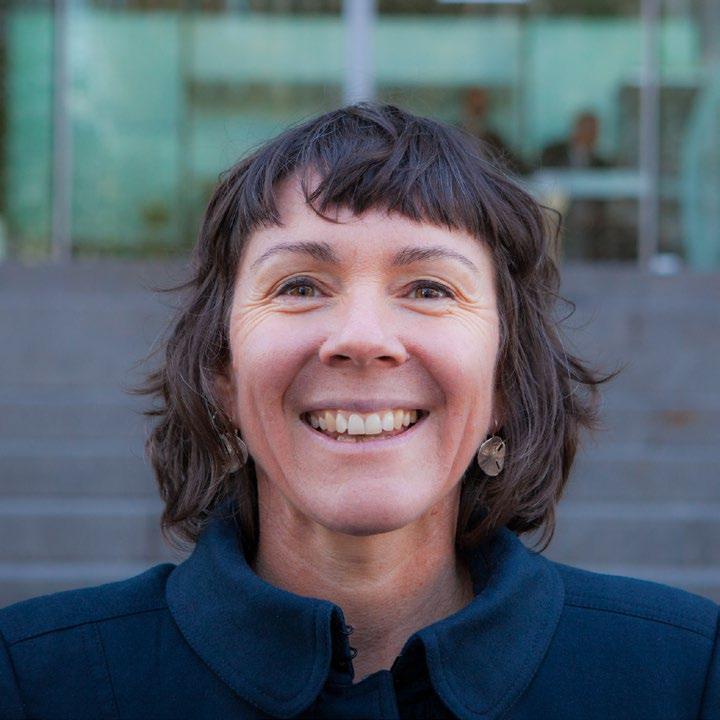
Currently, less than 1% of the High Seas are fully or highly protected. So, if we want to achieve 30% protection of the global ocean, we need to protect much more of the High Seas. The High Seas Treaty provides the legal framework and a clear process for establishing networks of marine protected areas in this area. If effectively protected and wellmanaged, these will help realise the target to protect at least 30% of the ocean by 2030, agreed upon by countries in December 2022 under the Kunming-Montreal Global Biodiversity Framework.
The new Treaty will be applied in a manner that “does not undermine” existing organisations such as regional fisheries management organisations (RFMOs), the International Maritime Organisation (IMO) (that regulates shipping) and the International
Seabed Authority (ISA) (that regulates mining). It also provides for its Parties to cooperate with relevant bodies and to promote the Treaty’s objectives when participating within them, including adopting relevant measures to support MPAs.
So, whilst they won’t replace those other regulations, the new global norms established under the Treaty together with the standards and guidelines to be developed, will create pressure to modernise and strengthen the assessment and management of fishing, shipping and other activities that have contributed to the overall decline in ocean health and resilience.
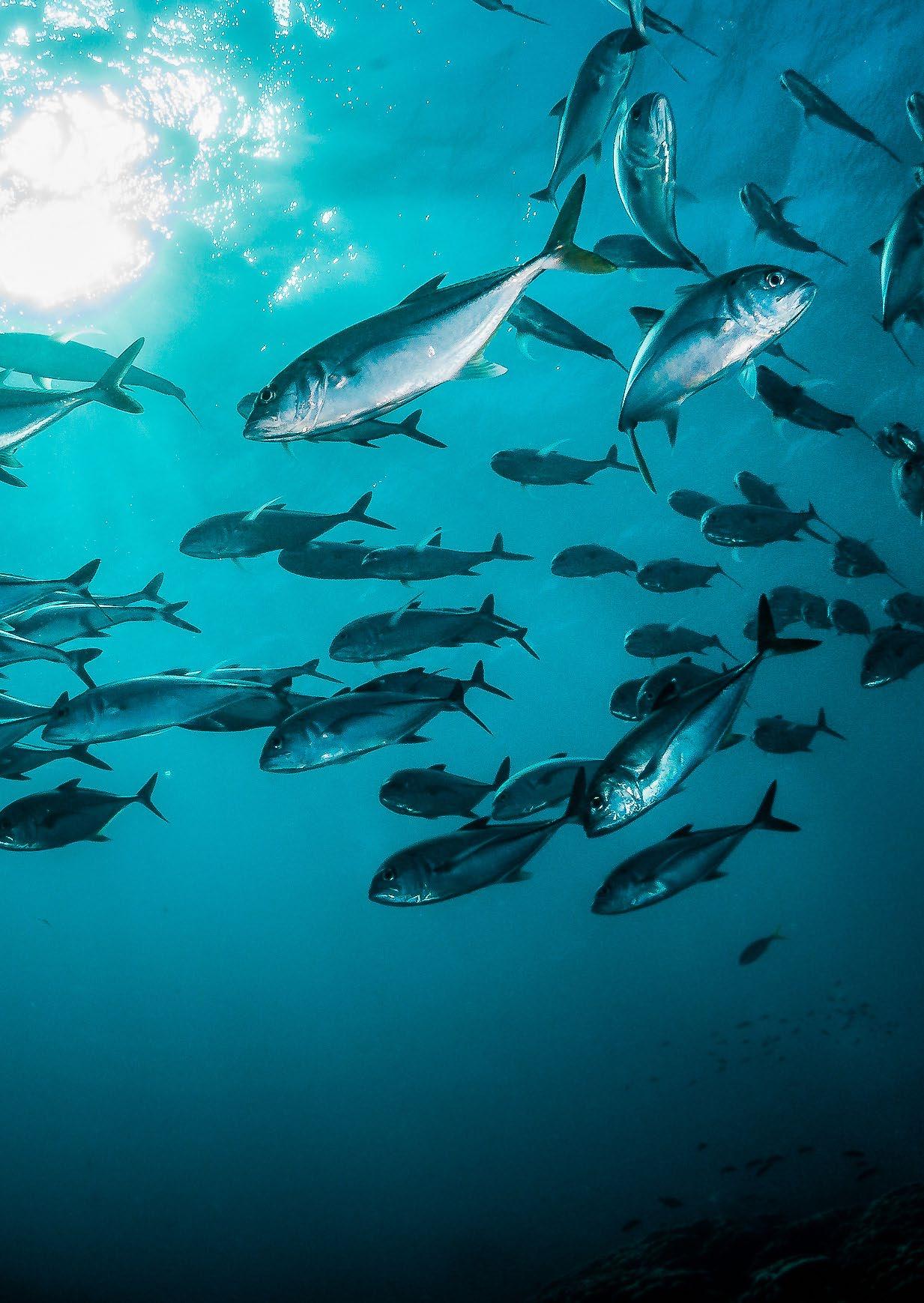
The Treaty sets out a clear process for a State or groups of States to submit a proposal for an MPA, as well as the steps for consultation and review. MPAs can be established through a three-quarter majority vote if consensus cannot be reached. This is a key factor in ensuring the effectiveness of the new Treaty because it prevents decisions from being blocked by one or two States. It also provides guidelines for the implementation, monitoring and review of MPAs and is underpinned by an objective to support developing countries in developing, monitoring and managing them through capacity building and technology transfer.
Before it becomes a binding international law, the Treaty text must be formally adopted by
the negotiating States. Next, countries will sign and then ratify it, in most cases after taking necessary steps through their own domestic legal processes. The sixtieth country to ratify will start a hundred-and-twenty-day countdown, after which the global agreement will enter into force. The High Seas Alliance is aiming for at least 60 countries to have ratified the High Seas Treaty by the UN Ocean Conference in June 2025, France. This is an ambitious milestone for governments to rally around so that the Treaty and its protective provisions can be implemented as soon as possible.
For World Ocean Day this year, the High Seas Alliance will be hosting a webinar on 15th June about the High Seas Treaty and welcome people from around the world to join and find out how they can support the campaign to protect the High Seas! Keep an eye on their social media channels for the link.

Twitter: @HighSeasAllianc
Instagram: @highseasalliance
Website: www.highseasalliance.org

 Written By | DARBY BONNER
Written By | DARBY BONNER
The ocean is a vast and mysterious place. With the advancement of technology, we now have the ability to explore and understand the ocean on a whole new level. Cutting-edge tools provide researchers and scientists with the ability to gather data and monitor the ocean in ways that were once impossible. These innovative technologies have the potential to revolutionise our understanding of the ocean and its impact on our planet.
Clean Earth Rovers is a company that strives to be innovative in the clean tech industry, whether that is in cleaning oceanic debris in an efficient and effective way, as well as gathering water quality data that can be used in many different ways like protecting marine life, human life, and knowing one’s waters to the most in-depth level.
Clean Earth Rovers is driven by motivated and passionate employees who have much experience in the business and engineering world, looking to solve real-world issues in the most productive way. Clean Earth Rovers’ mission is to collect oceanic plastic waste from marina/harbour scale waterways using autonomy and next-generation technology, while also collecting water quality data to track things like algae blooms, red tides, and other toxic chemicals which
have been found to be incredibly deadly towards all types of life.
In most situations in the US, water is typically analysed through manual testing, or through extremely expensive equipment data receivers that are only able to collect a limited amount of data. Many times, these devices can only collect one to two samples of specific data, and they are limited in their capabilities to read multiple different samples of data that are in a body of water. For example, a water testing device may only be able to track one specific thing like PH levels or oxygen levels, rather than being able to track many different types of data combined into one single device.

The rover is an autonomous marine vessel that skims the surface of the water to collect many different types of debris like trash, sticks, dead fish, oil, and much, much more.
The need for The Rover originally comes from the harm to marine life and the lack of services that are available to collect trash in bodies of water without
using manpower. Clean Earth Rovers have found that many different types of businesses and municipalities struggle to maintain their waterways due to time constraints, lack of manpower, and overall costs associated with removing debris entering their bodies of water. Their solution gives these places the ability to collect not only trash, but many different types of debris without using any human power! The vessel has the ability to collect whatever is needed on its own by using the autonomous software that is built within the product. This technology is the first of its kind.
The DataPod is an advanced technological buoy that is able to collect many different types of water quality data. This device floats in a body of water, and over time collects these samples that will then show results on a personal device.
The need for the DataPod comes from the lack of resources and access to water quality data available to many different types of marinas, harbours, and municipalities. Not only are other data testing devices extremely hard to receive and expensive, but they are also insufficient in collecting many different types of data needed. With Clean Earth Rovers’ DataPod, anyone is able to not only collect basic water quality data like PH levels, oxygen levels, turbidity, and much more, but the DataPod will also be able to read the waters and notify of the hazards and pollutants that are dangerous to humans and marine that are near or within the water. It also has the ability to notify that there may be a red tide or algae bloom in the near future based on the data the device is receiving. With this device, harbourmasters and marine workers are able to know exactly what is happening below the surface of the water.
Clean Earth Rovers’ work strives to improve all aspects of preserving and protecting our waters. Not only are they able to remove the harmful waste and pollutants that are killing millions of marine life every year, but they are able to track these issues to be more prepared and help eliminate these problems faster than ever. Their devices are able to help us understand our waters and remove many different types of pollutants that cause harm to all life, using technologies that have never been seen before.
Learn more: cleanearthrovers.com
 David Constantine - Co-founder & Chief Operating Officer of Clean Earth Rovers
David Constantine - Co-founder & Chief Operating Officer of Clean Earth Rovers

Aquatic Drones develop Autonomous Survey Vessels (ASVs) of different sizes to inspect and monitor the waterways, ports, coast, and ocean. Maarten is motivated to bring ecology and cost efficiency together in high-end innovative solutions. Working together with the government, research institutes, and industry partners towards impact is a big motivator.
The traditional way to analyse water in The Netherlands is to do it with a fixed sensor on a pole or with a manned vessel.
The Phoenix 5 is a 5-metre ASV to survey water quality, Bathymetry, and asset inspection. The Phoenix comes in multiple sizes and comes from 4 main challenges: There is a growing need for data, sailing personnel and surveyors are more and more difficult to find, scaling up two or more times the data does not fit the current budgets to deploy more equipment and people, and finding net zero solutions - non-pollutive solutions are becoming mandatory in winning projects.
The Phoenix 5 is more environmentally friendly than typical survey work as it is fully electrical with no carbon output and no underwater noise. So far, the Phoenix 5 has been successful in rivers in The Netherlands (The Ijssel & The Keen), Ports and coasts in Rotterdam, Ijmuiden, and The Hague, The North Sea, and soon the Phoenix 5 will be deployed in the Atlantic Sea at Casablanca in Morocco.
Learn more: aquaticdrones.eu | youtube.com/@aquaticdrones9480
 Maarten Ruyssenaers - Founder & CEO Aquatic Drones
Maarten Ruyssenaers - Founder & CEO Aquatic Drones
Continued on page 16

MarineLabs is a coastal intelligence company and real-time data provider, transforming marine safety, and building climate-resilient coastlines. Founded in 2017, they are a B.C.-based company offering the world’s highest resolution real-time wind, wave, and weather data as well as AI-driven insights from fleets of cloud-connected, rugged instruments. This data optimises port and vessel operations, and long-term data insights to help communities prepare and adapt
for coastal flooding and other hazards due to sea level rise and climate-change-driven weather volatility.
Through their subscription service, CoastAware™, MarineLabs provides real-time wind and wave data that help port operators and vessel pilots make important decisions when bringing large ships into port. It also assists coastal engineers in assessing wave and wake conditions and their impact on planned marine infrastructure. Ports and vessel operators are using our data to ensure safe and efficient waterways, reduce the risks of marine accidents which may cause spills or cargo loss, and minimise wasted fuel through

increased visibility into the most efficient routes.
In September 2022, MarineLabs’ CoastAware was used to gain accurate data on the effects of Hurricane Fiona and Hurricane Ian that tore through the region. Realtime data collected by the sensor buoys and accessed by Coast Guard, and allowed them to gain awareness of the storm’s effects along their coast in case they had to respond to an emergency during the storm. Additionally, measuring hurricane events allows MarineLabs to report on what actually happened and compare it to what was predicted to happen by forecasts. This is important because it provides validation that increases the accuracy of forecasts along coastlines.
MarineLabs collects and aggregates data over the years. This means an increase in new statistics about exposure, flood hazards, sea level rise, storm surge, and hurricane-driven weather risks along coastlines. This ensures that municipalities and coastal engineers who are designing coastal protection measures have the best possible data to make important decisions as it relates to their coastlines and coastal infrastructure. Since founding MarineLabs in 2017, Dr. Scott Beatty has grown the company from a startup into a reputable and profitable growth company. They are currently a diverse team of 15 full-time staff of engineering PhDs, Masters of data science, incredible ocean technicians, and ex-NASA employees who are focused on transforming marine safety and climate resilience with our technologies. Their technology is in use all along the Canadian Pacific and Atlantic coastlines.
Although Canada has the longest coastline in the world, it operates only 41 real-time weather buoys, roughly 1 station per 1000km. This data scarcity exposes coastal communities and industries to undue short-term risks of marine accidents and to long-term climate-change-driven weather volatility and coastal flooding.

CoastAware is MarineLabs’ proprietary technology that is powered by extremely high-resolution data from fleets of small, solar-powered, durable, self-contained, cloud-connected sensor units that bolt onto anything that floats. CoastAware provides real-time wind, wave, camera, and other data as a subscription service, freeing the customer from the hassles of buoy deployment and maintenance, and is available on any device.
There are vast regions of global coastlines that are data voids, which puts coastal environments at risk of marine accidents, and while weather volatility and
sea-level rise increasingly threaten coastal communities, accurate data is needed to help build the infrastructure for coastal protection. MarineLabs data fills the data voids, is more frequently updated, and provides 5MB of data, whereas other technologies offer just 5 bytes. It is a cloud-based platform that provides reliable real-time and long-term data to subscribers exactly where and when they need it. Sensor units can be deployed rapidly, meaning clusters of sensor locations can be set up in critical regions ensuring there is always a backup data source.
Learn More: marinelabs.io/coastaware

CoastAware BuoyCam is the first scalable, end-to-end ocean camera data product. The service provides subscribers access to 360-degree, near-real-time views of ocean conditions through images from sensor locations along coastlines. The new weather awareness data point improves the way search and rescue, harbour masters, and vessel pilots understand current weather conditions. The product helps users confidently and safely navigate using a visual reference to better understand surroundings like fog, debris in the water, and rough conditions. The BuoyCam module integrates with all MarineLabs hardware models that are rapidly deployable on existing navigational aids.
The CoastAware BuoyCam service is currently in 16 beta testing locations along Canadian coastlines, in both the Atlantic and Pacific regions. The $1.1M trial with the Canadian Coast Guard is being funded through the Innovative Solutions Canada (ISC) Test Stream for a year. This is the first scalable, end-to-end, buoy-mounted camera data product on the market. While some costly, large, legacy buoys do have cameras, they experience downtime issues and are costly to maintain because they require specialised ships in order to deploy and maintain them.
Learn more: marinelabs.io/product-buoycam
Scott Beatty - Founder & CEO MarineLabs“Stop overthinking how big your impact is on this world, start acting from your very own backyard, and be persistent in it.”
Pascal Sebastian - Lead Marine Biologist for Indo Ocean Project
“The World’s Ocean is a vast and immensely beautiful ecological life force, a critical player in the global climate, a powerful energy and food source, a global highway, and a near-infinite recreational area. It is the life-blood of human societies. I am dedicated to building, deploying, and operating technologies that protect Earth’s oceans and coastlines, I strongly believe this work is making a difference in Canada, and we will make a difference along all coastlines.”
Dr. Scott Beatty - Deep-tech Entrepreneur and the Founder & CEO of MarineLabs
“It’s not one person’s responsibility to protect the lungs of the planet, it’s all of ours. We need to urgently protect and restore ocean habitats, reduce the impact of climate change, fish responsibly, and consume consciously. There is so much left worth protecting!”
“Our ocean is precious and far too often taken for granted. We need firm action from Governments on their commitments made both at home, and internationally, to protect our marine environment by reducing damaging fishing practices, stopping avoidable ocean pollution and implementing strong marine protected areas to allow habitats and biodiversity to thrive.”
“I believe it still comes down to shifting society’s relationship with our ocean; the more people can find the ocean relevant to their livelihood, the better chance they will care about their impact on it.”
 Shellby Johnson-Rodney - Outreach & Communications Specialist - NOAA: National Oceanic & Atmospheric Administration
Shellby Johnson-Rodney - Outreach & Communications Specialist - NOAA: National Oceanic & Atmospheric Administration


This World Ocean Day’s theme is “Planet Ocean: Tides are Changing”.
As a lead marine biologist, how can we preserve and safeguard the ocean and our blue planet?
“No blue no green, no ocean, no us – we have zero chance of mitigating the effects of the climate crisis and ensuring food security without a healthy & thriving marine ecosystem, so we must do everything in our power to restore, regenerate and protect our oceans for humanity’s survival.”
Chris Gorell Barnes - Co-Founder and Founding Partner - Ocean 14 Capital and The Blue Marine Foundation“What if your business model was centered around regenerating the ocean? Only a few years ago, many people would have rolled their eyes at this statement. Today, I am inspired by the conversations I’m having with incredible entrepreneurs who lead their companies with the mission of safeguarding our oceans. Startups are essentials in rapidly bringing innovation to the table and disrupting the status quo. Tides are indeed changing, and for the best.”
Marianne Brisson - Host - Seaze Podcast
“We are fortunate to live alongside Morecambe Bay, a vitally important feeding & breeding ground for threatened birds like the Lapwing, Curlew & Eider which travel huge distances to visit our shores. A healthy marine environment is crucial to the survival of nature and people and World Oceans Day is an opportunity for us to reflect locally on the importance of our global oceans in all our futures.”
Sarah Mason - CEO - Morecambe Bay Partnership“Canada is becoming the best place in the world to start and grow a sustainable ocean company, I’m consistently encouraged by the number of ideas, startups and applied research projects that focus on ocean health and regeneration. We have a lot of innovating left to do to restore our oceans and planet, but as the World Oceans Day theme states, tides are changing.”
Donald Grant - Executive Director - Ocean Startup Project
At Mocean, we are developing devices that convert the energy in ocean waves into electricity: to complement existing renewable grids, to bring renewable and reliable energy to remote coastal communities, and to feed offshore equipment with locally generated power. All within a vision of sustainable progress and a renewed connection to the sea.”
Andrea Caio - Business Development Manager - Mocean Energy


Bringing groups together is often one of the best ways to protect fragile environments like salt marshes. We talked to Lora Clarke, of Pew Charitable Trusts, about how her love for the local coastline inspired the South Atlantic Salt Marsh Initiative.

Would you mind telling us about your background and work with coastal habitats?
I have spent my career advancing science and policies to better protect and manage our ocean and coastal resources ranging from fisheries to oysters to salt marsh. Now, as an officer at The Pew Charitable Trusts, I am helping to lead efforts to work with partners across the region to launch the South Atlantic Salt Marsh Initiative and implement our new regional plan.
Could you tell us a little about your attachment to the area – what does the coastline mean to you?
Growing up near the Chesapeake Bay in Virginia, the coast has always been a huge part of my life. As a child I spent my days digging in the sand trying to catch crabs and swimming in the ocean looking for fish. The summer before starting fourth grade, I asked my mom to sign me up for a summer camp on “Estuaries” at our local Mariners’ Museum and I’ve been hooked on this career path ever since.
Why are saltmarshes important? Who/ What relies on them the most?
Salt marshes are the ecological guardians of our coast. They provide a wide variety of benefits

ranging from habitat for fish, birds, and other wildlife to protection from storm surge, erosion, and coastal flooding. In fact, one acre of salt marsh can absorb up to 1.5 million gallons of floodwater. During storms, by absorbing floodwater and wave energy, salt marsh can decrease adjacent property damage by up to 20%.
Increasingly powerful storms are devastating our coasts. We need to look for solutions, and nature can provide a great defence. Salt marshes can absorb the power of waves, helping to reduce erosion and strengthen our shorelines. They’re delivering protection for our communities and military installations while providing places where people can fish, boat, kayak, go birding and enjoy nature.
If you love seafood, you can thank salt marshes. The things we love to eat – blue crabs, shrimp, flounder – they all grow up in the marshes. They’re nursery grounds for more than 75% of our commercial and recreational fish species in the U.S.
What are some of the problems faced by the local coastline and why do you think preserving saltmarshes will help?
Salt marshes are threatened by rising seas, polluted runoff, and unsustainable development, but we have an opportunity now to protect their future. As sea level rises, the marsh will naturally move inland – a process we call marsh migration – as long as it isn’t blocked by physical barriers or steep changes in elevation.
We think of habitats as staying in one place, but marshes are on the move. And if that movement is
blocked by buildings, roads, or elevation changes the marshes will drown as the ocean moves inland.
There’s a lot riding on our salt marshes – from supporting wildlife to protecting coasts. But you may not realize how many businesses make money from tourism, fishing and all the other activities that involve the marshes. It’s a smart money move to protect this economic asset.
as I eat fresh seafood from the marsh, and I often spend my weekends enjoying activities in the marsh. It’s an important part of our culture here.
The initiative has been a collaboration between many groups. Which groups and how did you bring them all together?
The strength of the South Atlantic Salt Marsh Initiative is the many partners it brings together for a common goal – protecting more than 1 million acres of salt marsh that stretch from North Carolina to east-central Florida. It brings together federal agencies, including the Department of Defense, state natural resource agencies, local governments, the Gullah/Geechee Nation, fishing organizations, conservation groups, private landowners, and more. We knew people would want to join this effort. It’s a win for everyone – nature, the military, communities, and coastal economies.
What inspired you personally to set up the Salt Marsh Initiative? What was Pew’s role?

A few years ago, as Pew began to expand our portfolio to include coastal habitats around the nation, we focused on learning more about salt marsh. We wanted to understand the status, benefits, and threats to this great habitat. As we talked to experts and met with communities, it became clear that in the South Atlantic, we have an opportunity to protect one of last vast stretches of salt marsh in the United States. We have over 1 million acres of relatively healthy salt marsh that is an integral part of the culture and way of life in the region. We realized how special this place truly is and decided it was time to act.

By partnering with the Southeast Regional Partnership for Planning and Sustainability (SERPPAS), we were able to use their landscape scale initiative for longleaf pine as a model to bring together federal and state natural resource agencies, as well as a variety of other partners, to develop a plan to ensure this habitat persists into the future.
I’m personally very invested in the success of this initiative because I’m fortunate enough to live in Charleston, South Carolina – a coastal city surrounded by this vast salt marsh. I pass the marsh each day as I drive, enjoy the view from restaurants
The salt marsh provides tremendous benefits to diverse groups of people. And while we’ve worked really hard to ensure we have as many voices represented as possible, there is still more outreach to do to reach more groups.
In this region, we are fortunate enough to be surrounded by a vast, healthy salt marsh ecosystem. We often find that some folks don’t realize that other areas aren’t as fortunate and the decisions they make today will impact whether this habitat exists for future generations.
What did you learn and how can this become a template for other areas – in the US and elsewhere?
SASMI derives its strength from its diverse partners and perspectives --from communities and governments to scientists and conservationists -everyone has a reason to protect the future of our salt marshes. Bringing diverse stakeholders together for a common cause is a model that can be used for other landscape scale efforts around the US and the globe. It’s important to bring as many stakeholder groups as possible into the process early to ensure their voices are heard, and the initiative is something that truly represents a variety of interests. That’s an important part of the recipe for success.
One example of how coastal areas can be affected by conflict between different groups is the idea of Highly Protected Marine Areas (HPMAs). In this interview, Caitlin Turner, Policy Officer of the Sustainable Inshore Fisheries Trust, highlights some of the contentious issues. SIFT’s mission is to:
“Shape and advocate policies affecting the Scottish inshore marine area, to ensure that the diversity and abundance of life in our waters is protected and restored, and maximise long-term social and economic benefits to all coastal communities.”

Scotland has some of the most productive seas on the planet, with many species of fish underpinning its rich ecosystems. However, as Caitlin notes:
“We’ve been witnessing a decline in the health of our marine environment: failing to meet ‘no loss in extent’ targets for internationally important marine habitats, witnessing an almost 50% decline in our breeding seabirds since the 1980s, and seeing a 92% decline in west of Scotland cod stocks in the last 4 decades.”
Alongside the fishing industry, birdwatching, recreational fishing, and tourism/ecotourism also contribute to the Scottish economy. Tackling the decline in fish stocks often creates friction between these different groups.
Naturally, everyone wants to preserve the marine environment, but how do we also protect Scottish fishing communities? One idea is the idea of HPMAs,
marine areas set aside that allow damaged ecosystems to recover.
Scotland’s present network of Marine Protected Areas (MPA) theoretically promotes sustainability, allowing carefully managed activities in balance with the environment. However, Caitlin believes they don’t go far enough:

“Scotland currently has a Marine Protected Area (MPA) Network covering 37% of our waters, but the percentage of protection is considerably less. Only 66km2 of the 90400 km2 in Scotland’s inshore waters are protected from all forms of commercial fishery.”
In response, the Scottish government proposed designating 10% of the country’s seas as HPMAs by 2026. Caitlin explains how they work:
“HPMAs protect marine ecosystems by removing pressure from human activities. This includes prohibiting fishing (both commercial and recreational), aquaculture, offshore wind, and oil and gas developments. Other recreational activities are monitored and managed.”
However, in Scotland, HPMAs raise fierce debate between different groups and politicians. The Scottish Fishermen's Federation (SFF) argues they could damage the industry, preferring an approach that
better balances the impacts on local economies. Conversely, conservationists suggest the proposals are too limited. Caitlin describes the arguments:
“Conflict has arisen primarily because many coastal communities – intrinsically linked to our seas through livelihoods, history, language and culture – feel that HPMAs are delivered through a ‘top-down’ process. Decisions made within Government lack engagement with the affected communities. Currently, coastal communities fear that marine-based businesses could be displaced.”
It is easy to understand the concerns of local fishing communities who may lose one of their major sources of income with a damaging effect on their unique culture. On the other hand, overfishing and environmental damage also devastate coastal communities.
Caitlin believes that HPMAs can slow the decline of Scottish seas, “HPMAs could help ecosystems recover and protect key habitats and fish nursery grounds, allow our seas to return to abundance, and preserve livelihoods that depend upon them long-term.”
She points to the success of a previous no-take zone:
“Evidence from a small No-Take Zone (an area where fishing is prohibited) at Lamlash Bay on the Isle of Arran, showed that effective protection can dramatically increase the size and abundance of commercially important species, like scallops and lobsters. Other such sites showed substantial recoveries of marine animals and habitats, and surrounding fisheries benefit from the ‘overspill’ of commercially fished species.”
Of course, as with many marine policies that affect many different groups, HPMAs must align with other
policies, and Caitlin believes this needs significant improvement:
“HPMAs have been proposed without wider plans for spatially managing our already busy seas – HPMAs must be factored into such a plan alongside measures to preserve livelihoods.”
Clearly, management measures for existing MPAs, the increase in offshore renewable energy, and a growing aquaculture industry create a complex picture. HPMAs must fit into this framework and include the views of local fishing communities:
“Scottish Government officials must understand the needs of communities impacted by HPMAs, alongside explaining the benefits. Local knowledge will play a vital role in selecting sites. Officials must also consider wider spatial planning, so that different zones can be assigned to different users (such as areas only for low-impact creel, pot and recreational fishers). This will support coastal communities.”
Conserving the way of life is crucial and, implemented sympathetically as part of a wider approach, HPMAs can protect both the environment and local communities. Ultimately, these do not need to be set against each other. As Caitlin puts it:
“I hope to see abundance and diversity recover in Scotland’s seas, but I also hope to see livelihoods, culture and communities preserved. With HPMAs factored into a wider spatial plan, we can do this: we can ensure our seas will flourish, and we can continue to use them sustainably, long into the future.”


Manatees are one of Florida’s most iconic animals but, sadly, these gentle giants are under pressure from pollution, recreation, and climate change. With 25% of Florida’s manatees dying in the past two years, they need protection. In this interview, Jon Paul “J.P.” Brooker, Director of the Florida Conservation Program at Ocean Conservancy, tells us what manatees mean to a native Floridian, and suggests how we can protect them.

J.P. is a perfect example of someone brought up on the coast, following a way of life that he could never truly leave. Although he lived abroad for a while, coming back to protect the coasts of Florida, especially his beloved manatees, was inevitable.

“Well, I'm a sixth generation Floridian born on the Indian River Lagoon, which is a very important area for manatees. So, I grew up swimming with manatees right at the end of my street. I've known from a very young age that I wanted to participate in the conservation of Florida water. Florida is such a magical state when it comes to its nature, its wilderness, its water, its ocean.”
Now, J.P. works tirelessly to protect manatees and understands their place in wider environmental issues. As he notes, “They're our poster child for a
lot of the water quality issues that the South-Eastern US is facing. They're really on the frontlines of a changing climate as one of the more severely impacted species in the United States.”
Almost everyone knows the threats to manatees, especially boat propellors that injure and even kill these giants. J.P. points out many subtle threats facing Florida’s manatee populations, including the backdrop of climate change.
“Manatees are the canary in the coal mine for a changing climate. Warming water temperatures affect harmful algal blooms and exacerbate the loss of sea grasses. We are making Florida waters inhospitable to manatees. We're fundamentally putting too much stuff in the water, whether that's debris and plastic - or nutrient pollution, which fuels harmful algal blooms that chokes out seagrass. If we're killing thousands of acres of seagrass every year, we're clearly starving those manatees.”
The plastic particles infiltrating many marine ecosystems are a threat that scientists are only just starting to understand. J.P. stresses that:
“It's also important to think about debris. Over the last several years, more than 30% of the manatees necropsied had plastic in their systems. I don't think we fully understand the impacts to manatee health, but it's safe to surmise that the impacts are not positive.”
Naturally, the next question is what actions we can take to reduce the threat to manatees, as individuals and as a society.
“Well, the US federal government is going to reclassify the manatee as endangered under the Endangered Species Act. That'll help protect critical habitats and reduce things like boat strikes, but it's not going to help the fundamental problem of water quality. Comprehensive water quality reforms are sorely needed.”

“Just today, House Bill 1397 directed $100 million to the Indian River Lagoon for improving water quality. That's a great step, but we need that scaled up to all of the state’s watersheds with the fundamental goal of reducing nutrient inputs, specifically nitrogen and phosphorus. Those two nutrients fuel harmful algal events.”
When pointing what actions can make a difference, J.P. cites a growing population and tourism, noting “We have 1,000 people moving to the state every day. Where are they getting water? Where does the waste go? The fundamental answer is it goes into our waterways and wreaks havoc on our wildlife.”
He stresses the need for individual responsibility and education for incomers and visitors, especially promoting the state’s iconic animals.
“In a state where around 36% of the population was born here, for people who want to visit or move to Florida, it's really important
to learn how to be Floridian. A key part of that is caring about manatees and other iconic wildlife. Mangrove swamps, coral reefs, and the Everglades… these ecosystems are interwoven into our identity.”
Another important aspect is personal responsibility, where individual residents and visitors make small changes that add up to a larger impact. J.P. notes that:
“You as a homeowner or a visitor can make decisions that have impacts on water quality. How you lay out your garden or the foods you pick. All these will ultimately impact water quality in Florida, as detached as they seem.”
Speaking to J.P., one thing that you notice is his passion and optimism, and he leaves us with a positive message:
“I'll be honest, I couldn't be in this line of work if I wasn't incredibly optimistic. All you have to do is look at Florida and see its natural beauty and the ocean. You'll feel in your heart that it's something deeply worth protecting. Growing up on the shore, looking at the ocean, that passion is really what gives me optimism, and I think people will rally together to protect these natural assets.”
Coral reefs are one of the most diverse and productive ecosystems in the world, providing habitat for countless marine species and protecting coastlines from erosion. However, the coral reefs are facing a serious threat due to climate change, overfishing, and pollution. Coral restoration is an important step towards saving these vital ecosystems from disappearing forever.
So, what does it take to protect a coral reef? In this exclusive interview with Angger from the GAIAONE Project in Indonesia, we will be diving into how the World’s Coral Gardeners are preserving the ‘tropical rainforests of the sea’.


Angger Asetiti: Coral Restoration Project Manager at Tevana House Reef, Indonesia.
My name is Angger and I grew up in central Java, Indonesia close to the Indian Ocean. I started the coral nursery for GAIAONE Restoration Project and since then, I have managed three different coral nurseries around Tanjung Bira, South Sulawesi, Indonesia.
We set a monthly goal to yearly plan on what we want the target to be. From there, I make day-today activities on what we need to do, and what needs to be done to reach these targets. These activities will depend on the three different coral nurseries, as they are set on different types of topography, coral species, and coral gardening technique. Sometimes we need to work on low tide, sometimes high tide, or slack in between tidal changes.
The activities vary from general coral gardening maintenance, fragmenting and planting new corals, transplanting, and carrying out drupella snail hunts. Drupella snails need hunting in Indonesia to control the population, as they remove the mucus that covers corals, exposing the corals to harmful microbes and coral diseases.
We also believe that education is key, so I also teach the local community how to plant corals and educate the local children about environmental awareness. Another thing I really enjoy is
designing underwater planting structures and exploring more techniques in the process!
So GAIAONE Project was initiated by my good friend Nori who owns an eco-lodge in Bira. She started this project with trash collection in Bira out of her passion and love for nature.
Nori then hired four local boys to pick up trash around Tanjung Bira Beach five days a week, two hours in the morning and two hours in the afternoon. Since September 2020 these amazing boys have collected up to 18 tonnes to date, and are still collecting! In 2021, Nori contacted me to brainstorm what to do in Bira next in terms of ocean conservation, so I suggested coral restoration, which is exactly what Bira needs.
Since July 2021we have planted 5,127 corals. To help us achieve this number our partners (who have worked with us since the project started) and the local community have been involved in building the coral nurseries. We are a very optimistic small team project who have the same faith in the local community. We hope to make this project into a community effort and believe in the small act of being environmentally aware is a first step in the right direction.
Currently our project consists of existing coral pods, spiders and 1 table rack and 2 Trinity racks for the coral cookie methods. We have also started 2 more nurseries in Dego Dego and Pulau Liukang. As of May 2022 we have planted 1801 corals and hoping to triple this amount by the end of the year!
Coral Fragments are collected from broken coral surrounding the Tevana House Reef dive site and attached to the existing structures. We then conduct coral maintenance work 2-3 times a week to ensure no algae, sponge or other coral threats affect the growth of our corals.
To our belief in the community effort, we do believe that a small act could make a great impact on those
who are involved in the project. We have reached and educated some local residents that are spearfishers, fishermen, boat builders, students, parents, musicians, and many others who resonate and align with our project to raise an awareness towards the importance of the ocean.
We count our progress on how many corals we planted, but we believe that the most important thing is to have more people join the effort in supporting our oceans. So for us, to have reached these people, we do feel that with the existence of this project, people can see, and do believe in baby steps. As with any coral restoration project, this is a mission where things are seen over time, rather than a ‘one-day result’ kind of work.
The local community in Bira needs a place and direction on where to go. With this project running we give them a place to learn, be involved and initiate a project for themselves. We work by providing them with the support they need such as training, education and sharing the facility we have.

We are a project with an open door for people to come and learn. Here at GAIAONE Restoration Project we offer you a chance of a lifetime to learn from Ocean Gardener and immerse yourself with the different knowledge and techniques to restore and preserve coral reefs.
Our Reef Restoration Course gives people the opportunity to learn about underwater coral gardening and the different techniques used at 3 of our different coral nursery sites. Here you will gain knowledge about the rope, spider, and coral cookie methods that are used to promote growth and diversity on our reefs.Coral restoration is an essential process that we must prioritise in order to protect our oceans and the countless species that call them home. By working together to restore damaged coral reefs, we can help to ensure a healthy future for our planet. By taking action now, we can ensure that our oceans remain healthy and vibrant for generations to come.
Website: oceangardener.org & tevanahousereef.com/gaiaonerestorationproject
Date: 11th - 14th June 2023
Location: Toronto, Canada
ACE, where the water community comes together to learn, connect, and be inspired to solve global water challenges. There is a priceless value in connecting with your peers in person. A palpable energy comes from the exciting innovation in the exhibit hall, and sessions pulsate with conversations that are a catalyst for change. Regardless of where you are in your career, there is something for everyone at ACE.
Date: 4th - 5th July, 2023
Location: Manchester, UK
The EWWM Conference provides an essential annual update on the latest innovations, best practice, cutting-edge technology and research in the wastewater sector.

Date: 26th - 27th September 2023
Location: London, UK
Helping accelerate the global net zero economy transition, the London Climate Technology Show is the most sought after conference & tradeshow focused on the fast developing climate technology value chain, where stakeholders from across the world of investment, government, media, entrepreneurship and academia assemble for experiencing two days of high value content and numerous new business opportunities.
Date: 27th - 28th September
Location: California, USA
A two-day event addressing the global water crisis is taking place at the Anaheim Convention Center, California, USA, on September 27th & 28th 2023.
The Future Water World Congress provides a platform for the industry to connect and engage to better understand the importance of the water crisis and to utilise the innovations to develop the water industry.
Date: 30th September - 4th October, 2023 Location: Chicago, Illinois
There is no better place than WEFTEC to meet water professionals from around the world and experience first-hand the best in water quality education, leading experts, the latest technology and trends, and proven solutions.
Date: 25th - 26th October
Location: Los Angeles, USA
World Water Tech North America is a two-day event for US water utilities, engineering firms, technology pioneers, regulators and investors.